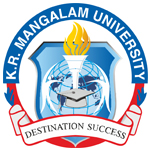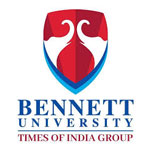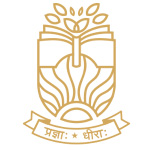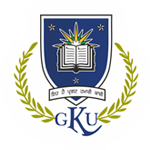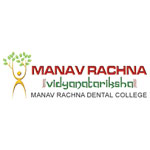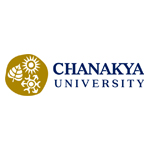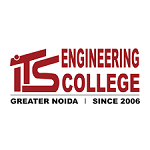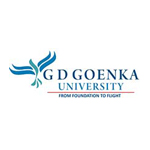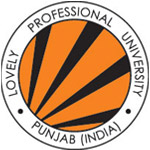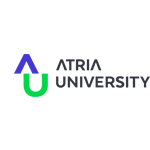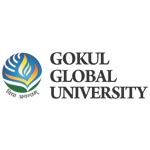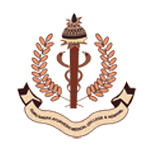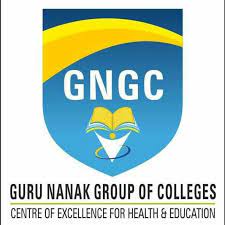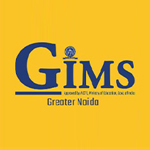CBSE Class 12 syllabus for Chemistry exam 2019
CBSE exams 2019: The Central Board of Secondary Education (CBSE) will conduct board examinations from February for the coming academic year 2019. The board has already released a list of vocational subjects for the examinations that will be conducted from February to March 2019, the schedule and date of the examinations will be released later.
Apart from the 40 different vocational subjects, the board will conduct exams for typography and Computer Applications (English), web applications, graphics, office communication, et al, in February as these subjects have larger practical component, and shorter theory papers.
Chemistry
Unit I: Solid State (Periods 12)
Classification of solids based on different binding forces: molecular, ionic, covalent and metallic solids, amorphous and crystalline solids (elementary idea), unit cell in two dimensional and three dimensional lattices, calculation of density of unit cell, packing in solids, voids, number of atoms per unit cell in a cubic unit cell, point defects, electrical and magnetic properties.
Unit II: Solutions (Periods 12)
Types of solutions, expression of concentration of solutions of solids in liquids, solubility of gases in liquids, solid solutions, colligative properties – relative lowering of vapour pressure, elevation of B.P., depression of freezing point, osmotic pressure, determination of molecular masses using colligative properties, abnormal molecular mass.
Unit III: Electrochemistry (Periods 14)
Redox reactions; conductance in electrolytic solutions, specific and molar conductivity variations of conductivity with concentration, Kohlrausch’s Law, electrolysis and laws of electrolysis (elementary idea), dry cell – electrolytic cells and Galvanic cells; lead accumulator, EMF of a cell, standard electrode potential, Nernst equation and its application to chemical cells, fuel cells; corrosion.
Unit IV: Chemical Kinetics (Periods 12)
Rate of a reaction (average and instantaneous), factors affecting rates of reaction: concentration, temperature, catalyst; order and molecularity of a reaction; rate law and specific rate constant, integrated rate equations and half life (only for zero and first order reactions); concept of collision theory (elementary idea, no mathematical treatment).
Unit V: Surface Chemistry (Periods 8)
Adsorption: Physisorption and chemisorption; factors affecting adsorption of gases on solids; catalysis: homogenous and heterogeneous, activity and selectivity: enzyme catalysis; colloidal state: distinction between true solutions, colloids and suspensions; lyophillic, lyophobic multimolecular and macromolecular colloids; properties of colloids; Tyndall effect, Brownian movement, electrophoresis, coagulation; emulsions – types of emulsions.
Unit VI: General Principles and Processes of Isolation of Elements (Periods 8)
Principles and methods of extraction: concentration, oxidation, reduction electrolytic method and refining; occurrence and principles of extraction of aluminium, copper, zinc and iron.
Unit VII: p-Block Elements (Periods 14)
Group 15 elements: General introduction, electronic configuration, occurrence, oxidation states, trends in physical and chemical properties; nitrogen – preparation, properties and uses; compounds of nitrogen: preparation and properties of ammonia and nitric acid, oxides of nitrogen (structure only); Phosphorous – allotropic forms; compounds of phosphorous: preparation and properties of phosphine, halides (PCl3, PCl5) and oxoacids (elementary idea only).
Group 16 elements: General introduction, electronic configuration, oxidation states, occurrence, trends in physical and chemical properties; dioxygen: preparation, properties and uses; simple oxides; ozone. Sulphur – allotropic forms; compounds of sulphur: preparation, properties and uses of sulphur dioxide; sulphuric acid: industrial process of manufacture, properties and uses, oxoacids of sulphur (structures only).
Group 17 elements: General introduction, electronic configuration, oxidation states, occurrence, trends in physical and chemical properties; compounds of halogens: preparation, properties and uses of chlorine and hydrochloric acid, interhalogen compounds, oxoacids of halogens (structures only). Group 18 elements: General introduction, electronic configuration, occurrence, trends in physical and chemical properties, uses.
Unit VIII: d and f Block Elements (Period 14)
General introduction, electronic configuration, occurrence and characteristics of transition metals, general trends in properties of the first row transition metals – metallic character, ionization enthalpy, oxidation states, ionic radii, colour, catalytic property, magnetic properties, interstitial compounds, alloy formation. Preparation and properties of K2Cr2O7 and KMnO4. Lanthanoids: electronic configuration, oxidation states, chemical reactivity and lanthanoid contraction. Actinoids: Electronic configuration, oxidation states.
Unit IX: Coordination Compounds (Period 12)
Coordination compounds: Introduction, ligands, coordination number, colour, magnetic properties and shapes, IUPAC nomenclature of mononuclear coordination compounds, bonding; isomerism, importance of coordination compounds (in qualitative analysis, extraction of metals and biological systems).
Unit X: Haloalkanes and Haloarenes (Periods 12)
Haloalkanes: Nomenclature, nature of C-X bond, physical and chemical properties, mechanism of substitution reactions. Haloarenes: Nature of C-X bond, substitution reactions (directive influence of halogen for monosubstituted compounds only). Uses and environmental effects of – dichloromethane, trichloromethane, tetrochloromethane, iodoform, freons, DDT.
Unit XI: Alcohols, Phenols and Ethers (Periods 12)
Alcohols: Nomenclature, methods of preparation, physical and chemical properties (of primary alcohols only); identification of primary, secondary and tertiary alcohols; mechanism of dehydration, uses, some important compounds – methanol and ethanol. Phenols: Nomenclature, methods of preparation, physical and chemical properties, acidic nature of phenol, electrophillic substitution reactions, uses of phenols. Ethers: Nomenclature, methods of preparation, physical and chemical properties, uses.
Unit XII: Aldehydes, Ketones and Carboxylic Acids (Periods 12)
Aldehydes and Ketones: Nomenclature, nature of carbonyl group, methods of preparation, physical and chemical properties, and mechanism of nucleophilic addition, reactivity of alpha hydrogen in aldehydes; uses. Carboxylic Acids: Nomenclature, acidic nature, methods of preparation, physical and chemical properties; uses.
Unit XIII: Organic Compounds Containing Nitrogen (Periods 10)
Amines: Nomenclature, classification, structure, methods of preparation, physical and chemical properties, uses, identification of primary secondary and tertiary amines. Cyanides and Isocyanides will be mentioned at relevant places in context. Diazonium salts: Preparation, chemical reactions and importance in synthetic organic chemistry.
Unit XIV: Biomolecules (Periods 12)
Carbohydrates: Classification (aldoses and ketoses), monosaccharides (glucose and fructose), oligosaccharides (sucrose, lactose, maltose), polysaccharides (starch, cellulose, glycogen); importance. Proteins: Elementary idea of a – amino acids, peptide bond, polypeptides, proteins, primary structure, secondary structure, tertiary structure and quaternary structure (qualitative idea only), denaturation of proteins; enzymes. Vitamins: Classification and functions. Nucleic Acids: DNA and RNA .
Unit XV: Polymers (Periods 8)
Classification: Natural and synthetic, methods of polymerization (addition and condensation), copolymerization. Some important polymers: natural and synthetic like polythene, nylon, polyesters, bakelite, rubber. Unit XVI: Chemistry in Everyday Life (Periods 8) 1. Chemicals in medicines – analgesics, tranquilizers, antiseptics, disinfectants, antimicrobials, antifertility drugs, antibiotics, antacids, antihistamines. 2. Chemicals in food – preservatives, artificial sweetening agents. 3. Cleansing agents – soaps and detergents, cleansing action.
Practicals
Microchemical methods are available for several of the practical experiments. Wherever possible such techniques should be used.
A. Surface Chemistry (Periods 5) (a) Preparation of one lyophilic and one lyophobic sol. Lyophilic sol: starch, egg albumin and gum. Lyophobic sol: aluminium hydroxide, ferric hydroxide, arsenious sulphide. (b) Dialysis of sol prepared in (a) above. (c) Study of the role of emulsifying agent in stabilizing the emulsions of different oils.
B. Chemical Kinetics (Periods 4) (a) Effect of concentration and temperature on the rate of reaction between sodium thiosulphate and hydrochloric acid. (b) Study of reaction rates of any one of the following: (i) Reaction of iodide ion with hydrogen peroxide at room temperature using different concentration of iodide ions. (ii) Reaction between potassium iodate (KIO3) and sodium sulphite (Na2SO3) using starch solution as indicator (clock reaction).
C. Thermochemistry (Periods 4) Any one of the following experiments: (a) Enthalpy of dissolution of copper sulphate or potassium nitrate. (b) Enthalpy of neutralization of strong acid (HCl) and strong base (NaOH). (c) Determination of enthalpy change during interaction (Hydrogen bond formation) between acetone and chloroform.
D. Electrochemistry (Periods 2) Variation of cell potential in Zn/Zn2+//Cu2+/Cu with change in concentration of electrolytes (CuSO4 or ZnSO4) at room temperature.
E. Chromatography (Periods 2) (a) Separation of pigments from extracts of leaves and flowers by paper chromatography and determination of Rf values. (b) Separation of constituents present in an inorganic mixture containing two cations only (constituents having wide difference in Rf values to be provided).
F. Preparation of Inorganic Compounds (Periods 4) (a) Preparation of double salt of ferrous ammonium sulphate or potash alum. (b) Preparation of potassium ferric oxalate.
G. Preparation of Organic Compounds (Periods 2) Preparation of any one of the following compounds: (a) Acetanilide (b) Di-benzal acetone (c) p-Nitroacetanilide. (d) Aniline yellow or 2-Napththol aniline dye.
H. Test for the Functional Groups Present in Organic Compounds (Periods 5) Unsaturation, alcoholic, phenolic, aldehydic, ketonic, carboxylic and amino (primary) groups.
I. Study of Carbohydrates, Fats and Proteins in Pure Form and Detection of their Presence in given Food Stuffs (Periods 4)
J. Determination of Concentration/Molarity of KMnO4 Solution by Titrating it against a Standard Solution of (Periods 8) (a) Oxalic acid (b) Ferrous ammonium sulphate (Students will be required to prepare standard solutions by weighing themselves).
K. Qualitative Analysis (Periods 10) Determination of one anion and one cation in a given salt. Cations – Pb2+, Cu2+, As3+, Al3+, Fe3+, Mn2+, Ni2+, Zn2+, Co2+, Ca2+, Sr2+, Ba2+, Mg2+, NH+ 4 Anions – CO2– 3, S2–, SO2– 3, SO2– 4, NO– 2, NO– 3, Cl–, Br–, I–, PO3– 4, C2 O2– 4 CH3COO– (Note : Insoluble salts excluded)
Project (Periods 10) Scientific investigations involving laboratory testing and collecting information from other sources.
News Source (Indian Express)
Want help with admissions?
Leave us your details and we will contact youApplications for Admissions are open
